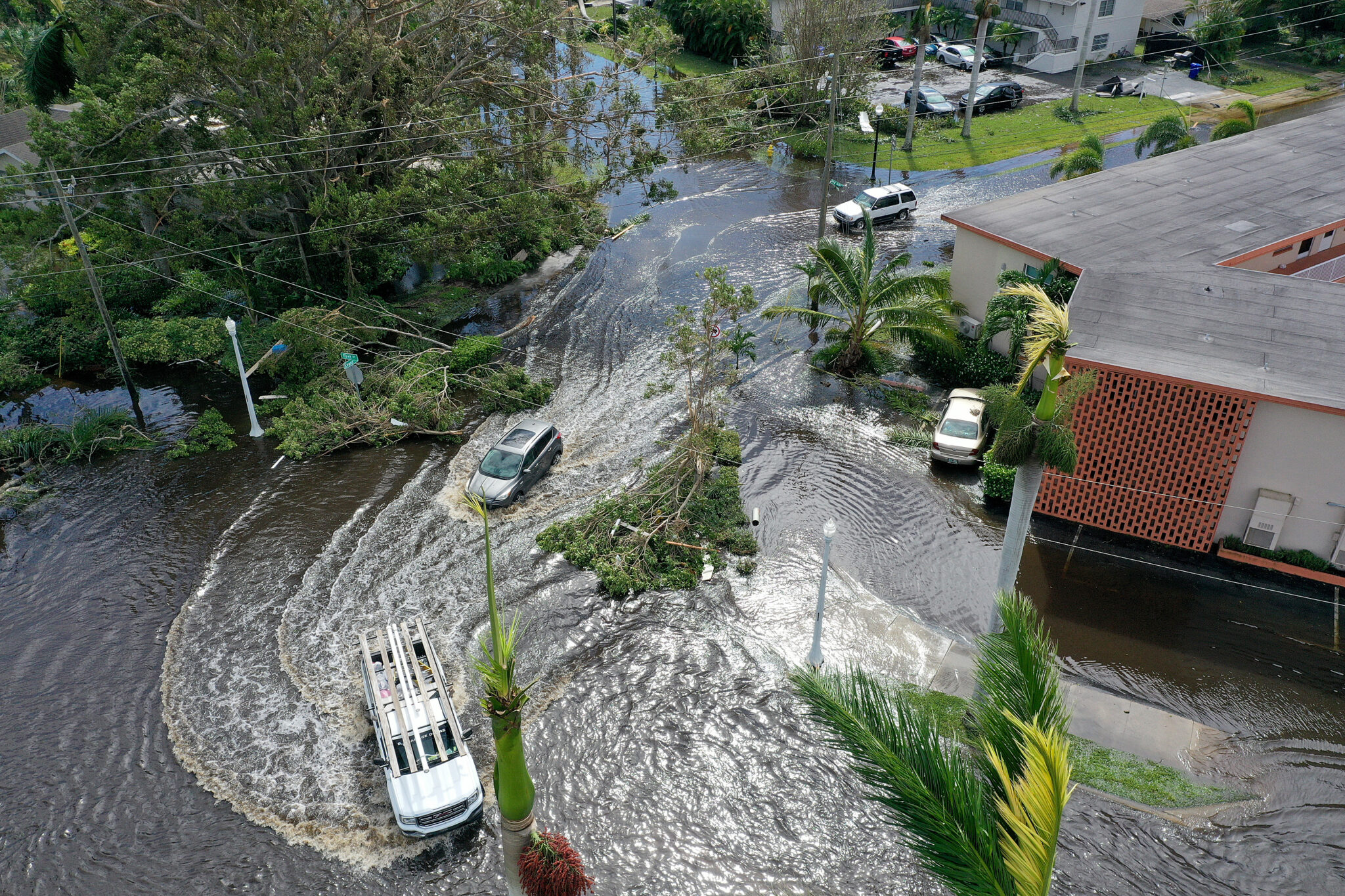 In this aerial view, vehicles make their way through a flooded area after Hurricane Ian passed through on Sept. 29, 2022 in Fort Myers, Florida. Credit: Joe Raedle/Getty Images
In this aerial view, vehicles make their way through a flooded area after Hurricane Ian passed through on Sept. 29, 2022 in Fort Myers, Florida. Credit: Joe Raedle/Getty ImagesSixty-six deaths, all in Florida, were attributed directly to the hurricane’s storm surge, inland flooding, high winds and other impacts in September 2022. In Florida the hurricane caused $109.5 billion in damage, making it the costliest hurricane in state history. Ian was the third-costliest hurricane on record in the United States, after Katrina in 2005 and Harvey in 2017.
“Ian made landfall in a region extremely vulnerable to storm surge, and the exact track, strong winds, and large storm size … contributed to the widespread devastating impacts,” the report said. “Ian also produced a significant storm surge on the northeast coast of Florida as it passed over the state, and along the South Carolina coast where it made a final landfall.”
One preliminary study concluded that human-induced climate change increased Hurricane Ian’s rainfall rates by more than 10 percent, according to researchers at Stony Brook University and Lawrence Berkeley National Lab.
Ian peaked as a category 5 hurricane packing 161 mile-an-hour winds before making landfall in southwest Florida on Sept. 28, 2022 as a category 4 storm. The hurricane’s greatest hazard was its storm surge, which claimed 41 lives, including 36 in Lee County. In Fort Myers Beach the water rose as high as 15 feet, destroying 900 structures and damaging 2,200 others. Surges of up to five feet also occurred along the northeast coast from Volusia County to the Georgia border.
Meanwhile, in a state accustomed to 50 inches of rain annually, Ian’s downpours were monumental. Nearly 27 inches were recorded in Grove City, just north of where the hurricane made landfall. Several southwest Florida counties experienced significant flooding when the Peace, Myakka and Alafia rivers and also Horse Creek crested to record levels.
In central and eastern Florida the hurricane dropped up to 20 inches of rain, causing major flooding along the St. Johns River, Lake George, Crest Lake and Little Wekiva River, along with Dunns and Shingle creeks. Daytona Beach got more than 21 inches. Along the St. Johns River, Florida’s longest river, water levels reached as high as four feet above ground level.
The inland flooding was responsible for 12 deaths and led to more than 250 water rescues. The Florida Department of Agriculture and Consumer Services estimated that flooding and wind damage caused up to $1.8 billion in losses to the state’s crops and infrastructure.
Four deaths also were related to wind, and one fatality was due to rough surf. A boat carrying 27 migrants from Cuba to the United States capsized near the Florida Keys, and seven bodies were recovered but 11 migrants remain missing. A couple living on a separate boat also went missing near the Florida Keys. Other causes of death included lack of access to timely medical care, accidents related to storm preparations and clean-up and carbon monoxide poisoning.
Ian also produced 15 tornadoes, with all but one occurring in Florida. Some of the tornadoes caused injuries and considerable damage. One of them caused $2 million in damage at the North Perry Airport in Pembroke Pines, south of Fort Lauderdale.